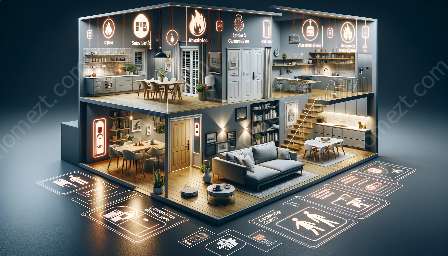Home safety is a critical concern for individuals with disabilities, as they may face unique challenges in navigating and accessing their living environments. Creating a safe and secure home for people with disabilities requires careful planning and consideration of their specific needs and limitations. This comprehensive guide aims to provide tips and strategies to help improve home safety for individuals with disabilities.
Understanding the Importance of Home Safety for Individuals with Disabilities
People with disabilities often spend the majority of their time at home, which makes it even more important to ensure that their living space is safe and accommodating. By taking proactive measures to address home safety concerns, individuals with disabilities can experience an enhanced sense of independence and confidence in their daily living activities. Additionally, a safe and secure home environment can help prevent accidents and injuries, promoting better overall well-being and quality of life.
Adapting Home Environments for Individuals with Disabilities
When it comes to home safety, one size does not fit all. Each individual's disability may require different considerations and modifications to their living space. For example, individuals with mobility impairments might need ramps, grab bars, and non-slip flooring to ensure safe movement throughout the home. Those with visual impairments may benefit from adequate lighting, contrasting colors, and tactile signage to facilitate navigation and orientation within the home.
Furthermore, individuals with cognitive or sensory disabilities may require modifications to reduce potential hazards and promote a calming, organized environment. This could involve removing clutter, securing loose cords, and utilizing technology-assisted safety features, such as smoke detectors with visual and auditory alerts.
Home Safety Tips for Individuals with Disabilities
Here are some essential home safety tips tailored to the unique needs of individuals with disabilities:
- Install grab bars and handrails in key areas, such as bathrooms and hallways, to assist with stability and mobility.
- Ensure that pathways are clear and free from obstacles, allowing for unobstructed movement for individuals using mobility aids or wheelchairs.
- Use non-slip mats and rugs to prevent slips and falls, particularly in areas prone to moisture, such as bathrooms and kitchens.
- Implement accessible design principles, such as lever-style door handles and adjustable-height countertops, to enhance usability for people with physical limitations.
- Consider incorporating smart home technology, such as voice-activated devices and remote-controlled appliances, to facilitate independent living and safety monitoring.
Enhancing Home Security for Individuals with Disabilities
Security is another crucial aspect of home safety, especially for individuals with disabilities who may be more vulnerable to potential threats. Some strategies to enhance home security for this demographic include:
- Installing reliable and accessible security systems, such as alarms, cameras, and motion sensors, with options for remote monitoring and alerts.
- Ensuring that entryways and windows are secure and equipped with accessible locking mechanisms, while still allowing for emergency egress if needed.
- Collaborating with community support networks, such as neighbors, local law enforcement, and disability advocacy groups, to establish a support system for emergency situations and security concerns.
- Providing education and training on personal safety and emergency preparedness for individuals with disabilities and their caregivers or support personnel.
Conclusion
Creating a safe and secure home environment for individuals with disabilities is a multifaceted endeavor that requires careful attention to their specific needs and circumstances. By implementing the recommended home safety and security strategies, individuals with disabilities can enjoy greater autonomy, peace of mind, and quality of life within their living spaces.




